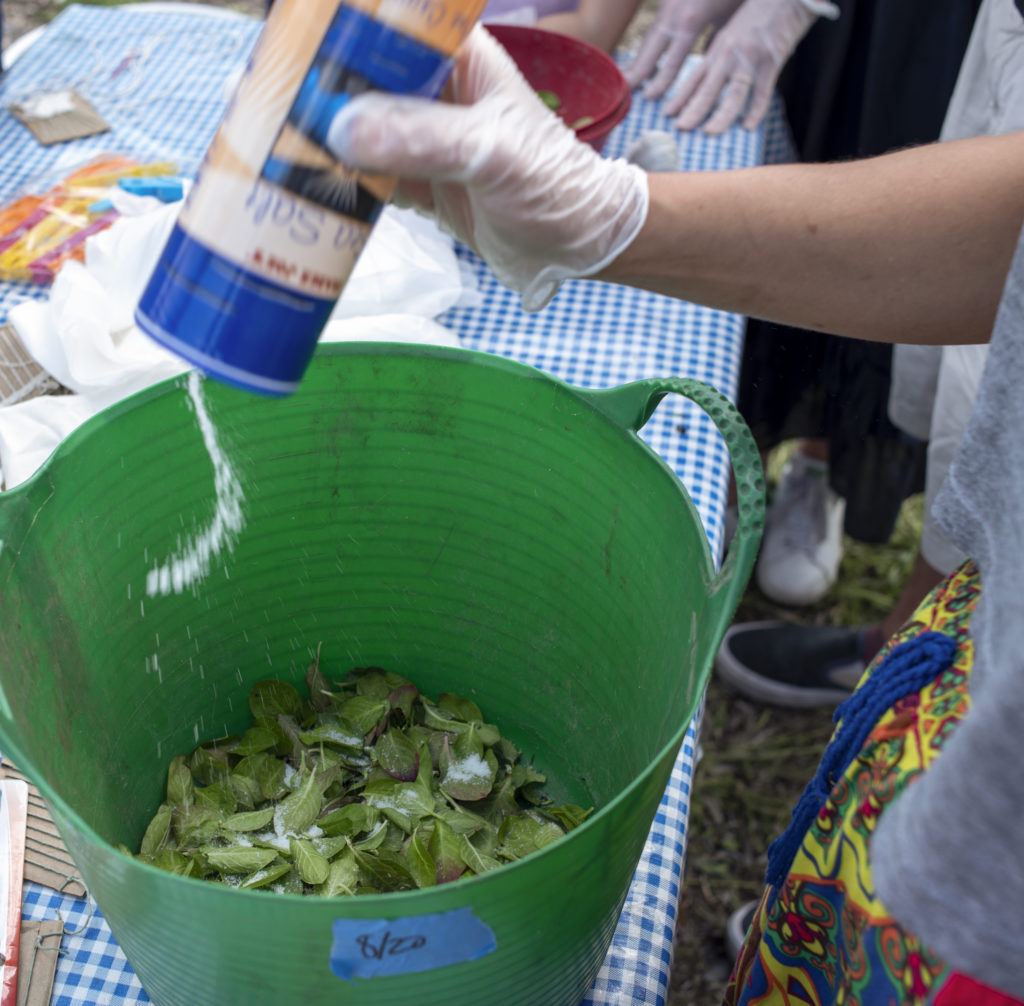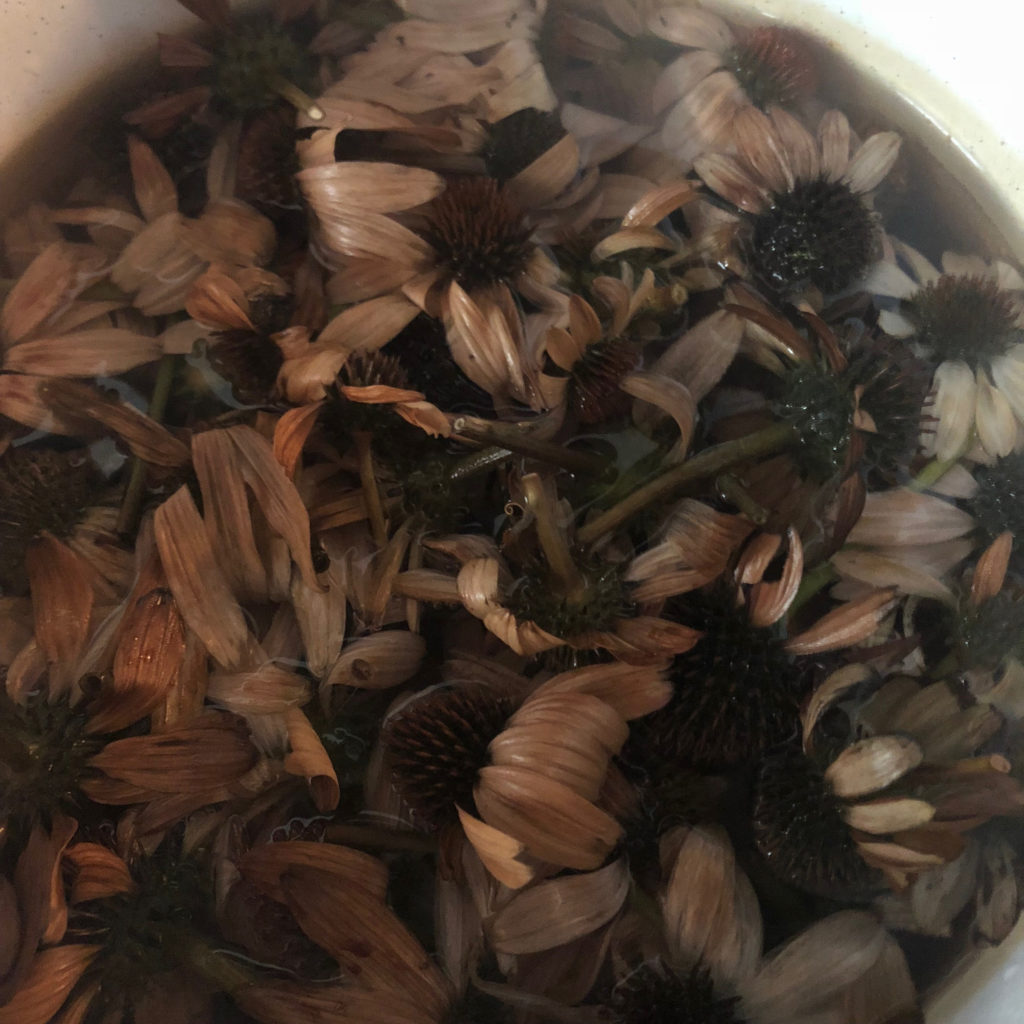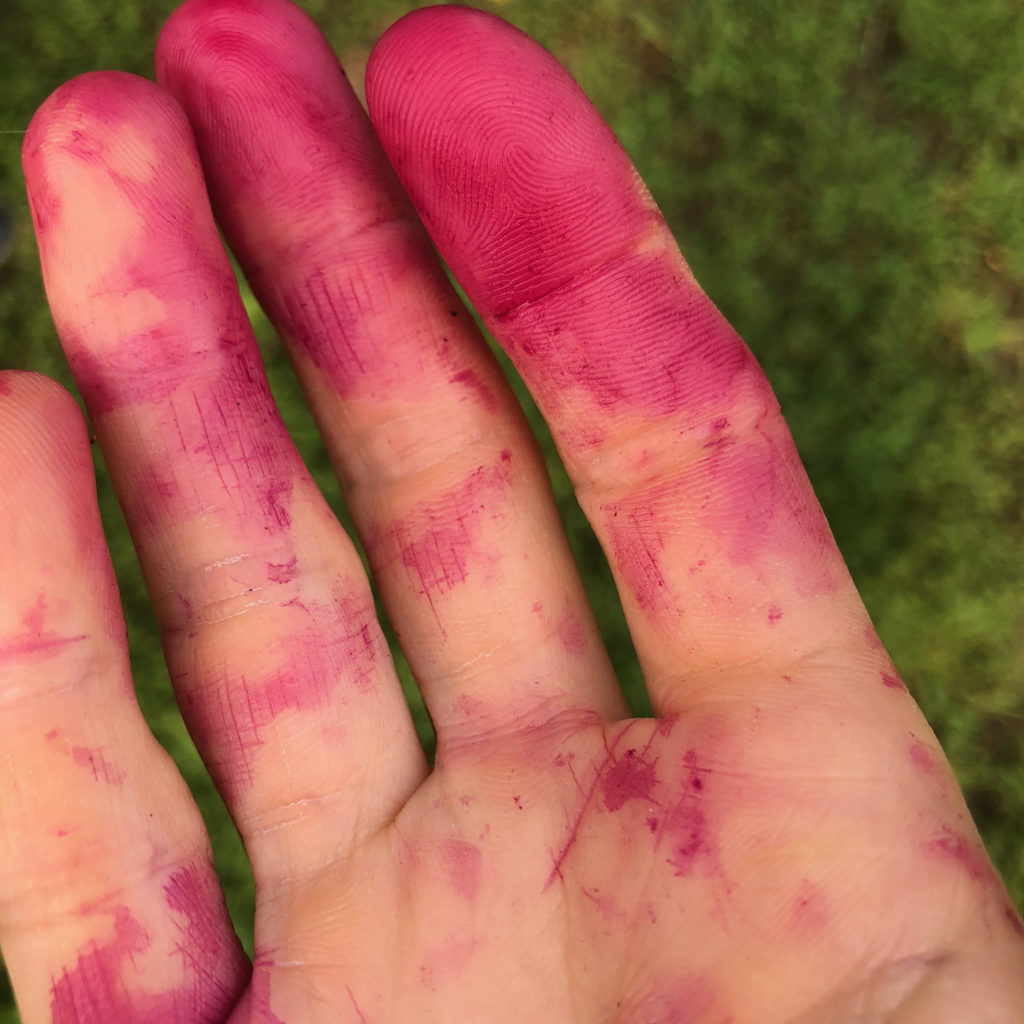Plant-printing and dyeing, and food, dye and medicine garden tours, 2023


Plant Food, Dye, Medicine tour, Old Stone House & Washington Park, Brooklyn, 9/17/2023. Co-led by herbalist Danielle Moore. Top, visiting native, naturalized and pollinator plants. Bottom: harvesting Amaranthus cruentus, red amaranth, for mono-printing and dyeing.


Participants in Food, Dye, Medicine tour making plant mono-prints by pounding leaves and flowers onto fabric with a ball-peen hammer. Bottom: prints by Sarah Jensen.
Indigo dyeing workshops, NYC, 2019
In 2017, I began growing indigo from seed in my Brooklyn apartment after reading the legend of Eliza Lucas Pinckney, credited with having made indigo a North Carolina cash crop from 1745–75. Understanding the role enslaved laborers played in indigo’s success, including applying cultural knowledge of how to grow indigo and extract pigment, I decided to try producing indigo from seed to dye as a performance of labor and empathy. In the process, I began learning cultural, technical and social global indigo traditions, which I share in free, public workshops at several NYC sites, including Old Stone House and Wyckoff House, Brooklyn, and GrowNYC’s Governors Island Teaching Garden, all three of which provide free space and plant care in exchange for my public workshops and knowledge. While I grow seeds at home, I plant seeds with friends around NYC, and the Education Greenhouse of the Brooklyn Botanic Garden also sows seeds.
Below is documentation of this summer’s workshops.







Natural dye workshops, NYC, 2018
In addition to growing and dyeing with indigo, I forage for and collect other plant matter found around NYC. At a natural dyeing and embroidery workshop at Wyckoff Farm in East Flatbush, Brooklyn, summer 2018, we used Rudbeckia flowers and pokeberry found on the farm to create natural dyes. We simmered these in separate dye pots and added alum, a pickling salt, as a mordant. After an hour of simmering, we added silk handkerchiefs.





Walk-in embroidery workshops, 2019
In September 2019, the Lower Manhattan Cultural Council opened a new art space on Governors Island. I was invited to lead a walk-in embroidery workshop as part of the Take Care series, emphasizing sustainable use of materials. While some students used freshly cut pieces of fabric as a stitching surface, others brought clothing and other textiles to mend through embroidery. Below are several students’ works in progress. Participants included children and adults of all ages and prior levels of experience with sewing and embroidery.




Textile arts workshops with seniors at Midwood Active Adults, 2018
Through my (Im)migration Lines Artist Residency at Wyckoff House Museum, sponsored in part by a Brooklyn Arts Council Community Arts Fund grant, I led monthly textile arts workshops for seniors at Midwood Active Adults from January – June 2018. Participants revived childhood and adult skills in embroidery, beading and needle arts, threading narratives through stitched drawings. We began by reviewing basic stitches and making samplers, after which, participants took initiative to create personally expressive artworks. Several finished pieces were included in the BAC-sponsored Nou la – We Reach! exhibit at Wyckoff House from June – October 2018, and in my residency culminating exhibit from November 2018–April 2019.







